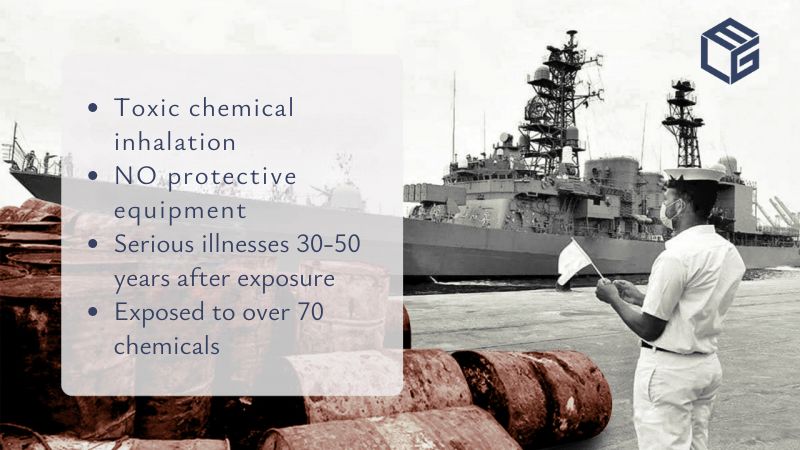Asbestos products U.S. Navy veterans were exposed to
Although as early as the beginning of the 20th century there were suspicions regarding the health hazards posed by asbestos, the U.S. administration and private companies refused, for a long time, to investigate the issue and to minimize and regulate the uses of asbestos. The U.S. Navy was among the most reticent; as a result, until the early 1980s asbestos was used in hundreds of products that posed serious health risks for the servicemen and women working in their close proximity:
U.S. Navy ships/shipyards are known for asbestos exposure
For the better part of the last century, asbestos was present in over 300 different products on U.S. Navy ships. Consequently, anyone who spent time on a ship or on a shipyard was inevitably exposed to asbestos, which today is known to cause numerous life-threatening diseases.
Approximately 30% of lung cancer patients are veterans. Find your ship or shipyard:
Areas of the ship with the heaviest asbestos exposure
While asbestos exposure affected everyone who was present on the U.S. Navy ships before 1980, when asbestos use was finally regulated in the military, there were certain areas on the ships where asbestos exposure occurred to a great extent. People who spent a long time in these areas were heavily exposed to asbestos, which may result in the development of a terrible disease over the years. For this reason, we strongly encourage veterans who were present for a long time in the following ship areas to undergo regular medical examination, as they are at high risk of developing a disease such as lung cancer or mesothelioma:
- the damage control room
- the pump room
- the engine room
- the propulsion room
- the boiler room
- the powder and shot magazine
- the pilot house
- the wardroom
- the turret
Navy veterans are commonly misdiagnosed with the wrong pulmonary diseases
It is crucial to know that, because the diseases that can ensue from asbestos exposure take a long time to develop, the risk of illness remains throughout your lifetime if you are a Navy veteran. Another important aspect you should be aware of is that oftentimes, people who come to suffer from such a disease do not experience symptoms until it is too advanced to respond to treatment. Therefore, undergoing regular testing is vital if you have a history of military asbestos exposure. Early diagnosis is instrumental and can even save your life or at least prolong it to a great extent. A simple chest X-ray can reveal the presence of asbestos fibers in your lungs, as well as whether the mineral has caused any damage hitherto. Other important tests and procedures diagnosing asbestos-associated lung diseases include:
- pulmonary function tests
- blood tests
- sputum cytology tests
- ultrasounds
- CT Scans
- MRIs
- PET Scans
If you lost a loved one to asbestos-related cancer, you are eligible for financial compensation
Surviving spouses and dependents of Navy veterans who have died from asbestos-related cancer as a result of their service may be eligible for dependency and indemnity compensation. Since 1990, the lawyers at Environmental Litigation Group, P.C. have been assisting veterans injured by asbestos, who can now easily recover the compensation they deserve. We will also provide legal assistance to families who lost a loved one under these circumstances.
If their loved one has passed away from lung cancer or another asbestos-related disease, family members can also receive compensation from one or more of several trust funds created to pay victims and their families. Because the money comes from the asbestos trust funds which have been set up by liable companies within the past three decades, the legal process involves no litigation and takes significantly less time to complete than a regular lawsuit.
Asbestos exposure jobs in the U.S. Navy
